
Remission of Duties or Taxes on Export Product (RoDTEP) is a scheme for the Exporters to make Indian products cost-competitive and create a level playing field for them in the Global Market.
Starting with dispute between WTO & Indian Government & also with new export reforms to make Indian economy competitive, the Indian Government has come up with a WTO compliant proposed scheme called ‘Remission of Duties or Taxes on Export Products’ (RoDTEP) to replace the present scheme of MEIS from 1st January 2021.
Let's figure out if you are ready with new Scheme & Compliance it brings on table.
Yes MEIS is discontinuing...
MEIS, the flagship export incentive scheme, shall be discontinued from 1st January 2021 and shall be replaced by RoDTEP (Remission of Duties or Taxes on Export Products); a scheme for exporters to reimburse taxes and duties paid by then such as VAT (Value Added Tax), Coal cess, Mandi tax, Electricity duties and fuel used for transportation, which are not exempted or refunded under other existing mechanism. The Centre is looking to identify key sectors for priority implementation of the new Remission of Duties or Taxes on Export Product (RoDTEP) scheme and the basis for priority listing has not been mentioned yet. Currently, RoSTCL has been made functional till 31st of March, 2021. The online module for the same is available in DGFT's website.
In the words of commerce and industry minister Piyush Goyal
“This RoDTEP scheme is very important for our exports to get level playing field at the international level.”
# Two major Reasons why MEIS will be replaced
WTO Compliance
MEIS is not WTO compatible
Burdon of extra Taxes
Mandi tax, fuel cost etc. are not being covered by MEIS which was a set-back for exporters.
# Not everything is changing! Few similarities between our favourite MEIS and RoDTEP
FOB Incentives
The incentives shall be calculated on FOB (Freight On Board) value of the goods.
Duty Scrips
The Duty Scrips issued shall be freely transferable
One major dissimilarity between MEIS and RoDTEP is that the RoDTEP is data intensive. It requires large scale participation by the manufacture-exporters (particularly the layer beneath large manufacturers.
The data sought by the MoF is bifurcated into three parts Form R-1, R-2 and R-3, all of which pertaining to the period 01 October 2019 to 31 March 2020. Another important aspect is that all these forms needs to certify by a Chartered Accountant, likely because the government wants accurate data that mere hypothetical one. This piece discusses, how a manufacture-exporter can fill up the required forms and what back-end working that needs to be done.
Steps to be RoDTEP ready!
# Step 1: Ascertain the input taxes, that remain non-refunded / unaccredited
Level 1 input taxes include the taxes that are directly paid by the manufacturers-exporters which gets embedded in the cost of the export products. These expenditures on the fact of documents reflects the tax costs, illustratively;
- VAT and Excise duty on the fuel used in self-incurred transportation costs
- VAT and Excise duty on the fuel used in generation of electricity via power plants or DG Sets
- VAT and Excise duty on the fuel used in running of farm equipment/ machineries
- Electricity duty on purchase of electricity
- Mandi Tax/ Municipal Taxes/ Property Taxes
- Un-creditable CGST/ SGST/ IGST/ Compensation Cess on items falling under Section 17 (5) [passenger transportation vehicles, food and beverages, rent-a-cab etc.]
- Un-creditable CGST/ SGST/ IGST on amortizable value of works contract/ land building construction services/ inputs used for construction etc.
- Un-creditable CGST/ SGST/ IGST/ Compensation Cess which normally gets lost due to defaults by suppliers, e.g. GSTR 2A default, Section 16 (2) default, Section 16 (4) default [likely not to be accepted by committee in calculation, however one can hope]
- Stamp duty on export documents [stamp duty paid land/ buildings is forbidden]
Level 2 input taxes include the taxes that are not directly paid by the manufacturer-exporters but are embedded in the costs of their vendors. These taxes are not be available on the face of the documents, therefore some level of estimation is required and of course, vendor support is required in fetching the required data
- VAT and Excise duty on the fuel used by transporters for providing the transportation services
- CGST/ SGST/ IGST/ Compensation Cess on coal used for manufacture of electricity which is purchased by manufacturer-exporter
- CGST/ SGST/ IGST on the inputs used by the suppliers who are providing GST-exempt supplies to the manufacturer-exporter
- Embedded CGST/ SGST/ IGST component of the transporters (working under 5% GST scheme)
- Embedded CGST/ SGST/ IGST component of unregistered suppliers
# Step 2: Identify the export products
The next step is to identify the export products at their HS Code level and SKU level. A textile manufacturer may be producing similar products under different styles, names. The proforma requires the manufacturer-exporter to identify details of all products at SKU level. It might be the case that a manufacturer has numerous SKU, but they may be largely homogenous, therefore this exercise may be less tricky (owing to availability of data), but involves high degree of accuracy (as is required by the committee). Following details needs to be identified for every SKU;
- HS Code at 8-digit level
- Description of the product
- Drawback rate, schedule number, drawback cap (if any)
- Quantity produced during 01 October 2019 to 31 March 2020
- Quantity sold during 01 October 2019 to 31 March 2020
- FOB value of the product (in total and per quantity)
# Step 3: Ascertainment of rate
The compilation of data at step 1 narrows down the input taxes (major complexity is involved at level 2 input taxes). These total of these taxes (relatable to export product) an exporter-manufacturer expects should be refunded to him. But since the figures at step 1 are available at plant level/ company level, they need to be pegged to the export products. Accordingly, the input taxes identified at level 1 needs to be segregated towards each of the export products (identified at step 2) and thereafter RODTEP rate can be arrived for each of the export product identified at step 2.
# Step 4: Certification from Chartered Accountant
The compilation of data at step 1 narrows down the input taxes (major complexity is involved at level 2 input taxes). These total of these taxes (relatable to export product) an exporter-manufacturer expects should be refunded to him. But since the figures at step 1 are available at plant level/ company level, they need to be pegged to the export products. Accordingly, the input taxes identified at level 1 needs to be segregated towards each of the export products (identified at step 2) and thereafter RODTEP rate can be arrived for each of the export product identified at step 2.
How to apply for RoDTEP?
- The new RoDTEP Scheme is similar to the existing RoSCTL Scheme (Rebate of State and Central Taxes and levies), or we can also say that RoSCTL is the earlier version of RoDTEP.
- The existing RoSCTL Scheme is only for the made-ups & apparel sectors. The RoDTEP will, however, be applicable to all the sectors involved in exports.
- The application will be made under RoDTEP as we are doing for RoSCTL.
- An application shall be filed online using Digital signature Certificate on DGFT website at http://dgft.gov.in in the concerned RA (Regional Authority).
- Relevant Shipping bills shall be linked with the online application by the Exporter/Applicant.
- The refund under RoDTEP Scheme would be in the form of duty credit which will be transferable, or it may be in the form of electronic scrip which will be maintained in the electronic ledger.
The incentive will be based on percentage way of reward and is expected to be slightly lesser than the MEIS. However, due to reduction in cascading and in doubling of taxes, the benefits may be approximately similar. The RoDTEP is believed to cost INR 10,000 crore more than the existing MEIS.
More Related to RoDTEP, MEIS & Trade Policy:
- New norms for Rules of Origin 2020 , Are you Aware?
- Which export incentive scheme is better? MEIS vs RoDTEP
- New Export incentive scheme – Need of an hour!
We understand that the plethora of conditions and rules mentioned along with complex definitions are difficult to comprehend all at once. Hence, we at Bizbrains are always available to resolve your queries and doubts, however big or small
For more content and updates follow us on LinkedIn, Twitter and Facebook; our handle is Bizbrains Advisors. Get a heads up on various schemes on export-import activity and let us know your thoughts in comment section!

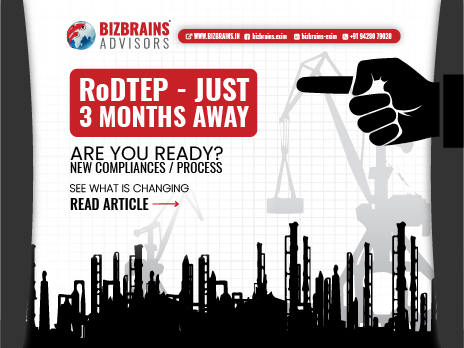
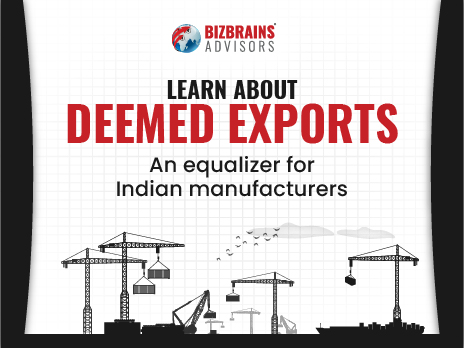
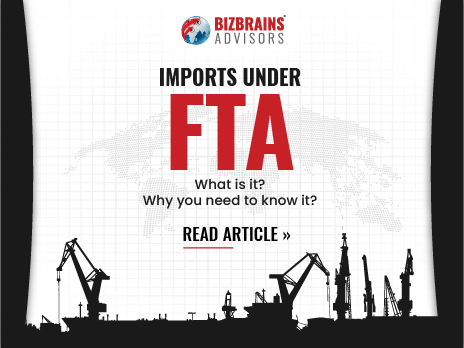
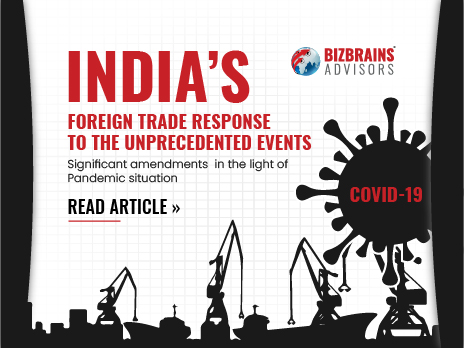
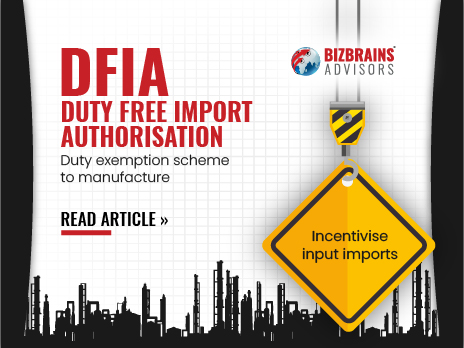
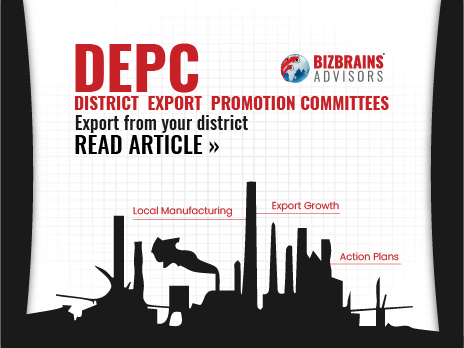
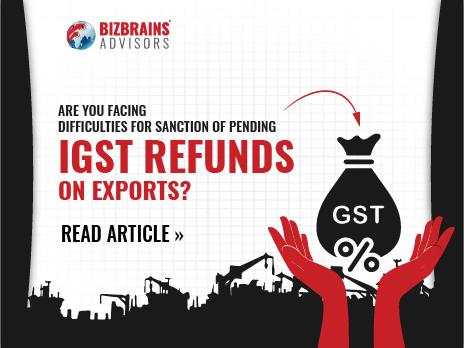

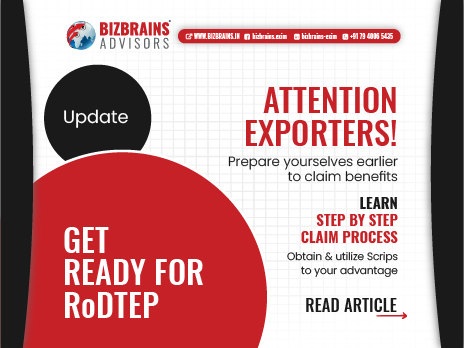
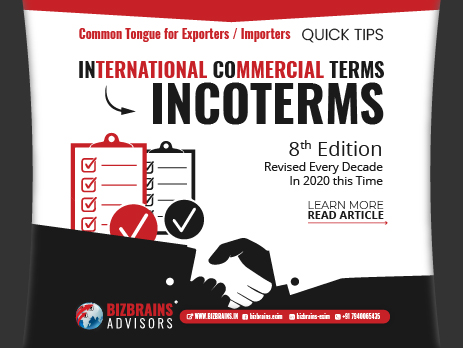
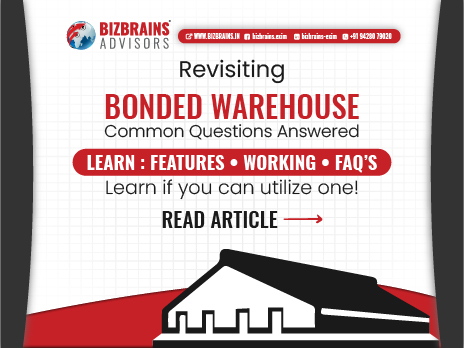
One Response